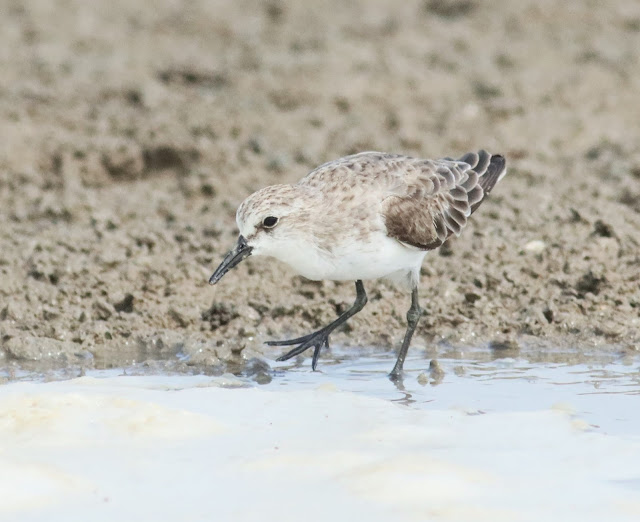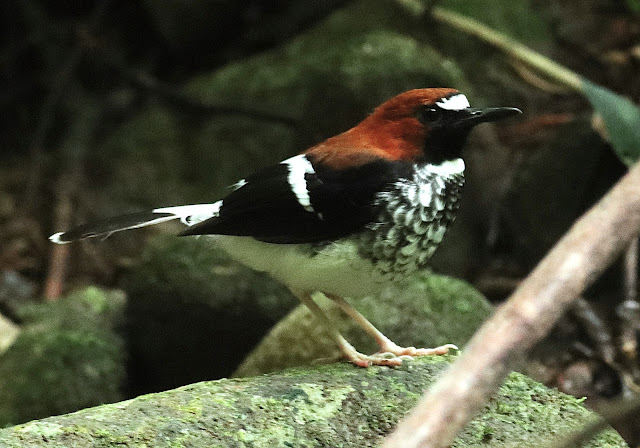This is a long overdue post. Too occupied with other work to concentrated on the waders until now. Here are several waders (the usual ones) which traverse our shoreline in West Peninsular Malaysia. These two months (i.e February and March) are basically occupied by two species of waders i.e Curlew SP and Asian Dowitchers.
A small flock of Black-tailed Godwits
Their numbers can reached in hundreds at times.
Bar-tailed Godwits
Their numbers can reached in thousands at times.
Bar-tailed Godwits
They usually fly in a tight formation but you never hear reports of them poking at each other backs.
Grey Plover (Black-bellied Plover)
Their population has decreased tremendously according to IUCN report. So it is always nice to see them in a flock.
Grey Plover (Pluvialis squatarola)
Apparently the breed as far as the Artic region. Here you can see one in partial breeding plumage.
Surprise ! surprise ! These two are actually Grey Plover (Black-bellied Plovers). Luckily I got a few overseas experts who are so willingly to assist in the ID (including Dave Bakewell who is also from overseas). Initially I thought they were Pacific Golden Plovers (PGP) but the whitish rump differentiated them from PGP.
Like most Calidris and Charadrius, they can actually fly very fast.
Terek Sandpiper in flight
Terek SP and Common Redshank scuttling away as we approach them.
Common Redshank
Bird-in-flight
Pacific Golden Plover
Bird-in-flight
Tibetan Sand Plover (Lesser Sand Plover)
Broad-billed Sandpiper
Their feathers always appears larger than the rest of the smaller waders like RNS.
The most difficult part of looking at waders are trying to age them and in this case trying to identify the type of feathers in their winter plumage. I have chosen the Asian Dowitcher as a sample as their feathers' contra are quite visible.
With the help of local wader expert (Dave Bakewell), the type of feathers are as follows:
1) Mantle, 2) and 3) Scapular, 4) Upper Tertial, 5) Tertial, 6) Primaries, 7) Under Tail Coverts, 8) Median Coverts, 9) Scapular, and 10) Lesser Coverts.
Here is a comparison of an Asian Dowitcher and a Curlew SP.
Asian Dowitcher (Limnodromus scolopaceus)
They are actually seen more often wading in a group rather than individually.
I believe this a Black-tailed Godwit.
Here is a comparison between a Black-tailed Godwit and a Common Greenshank.
I think this looks like a Common Greenshank (Tringa nebularia).
Another Common Greenshank (Tringa nebularia) I believe.
Its bill looks so thin but it is decurved like a Common Greenshank.
Here are a trio of Marsh Sandpipers.
Here comes the Red-necked Stint (RNS)
Lots of their photos this time.
Most of them came quite close to the edge of the tideline.
Looks like most of them have ready switched to their winter plumage.
This is the only one spotted with traces of breeding plumage. You can see that its neck is actually reddish.
This one has a very odd looking plumage. Nevertheless I believe it's a Broad-billed Sandpiper.
Now how about this one here? Many believe that it's a Broad-billed Sandpiper as well.
Next abundant waders seen this time were the Curlew Sandpipers.
Many of them still display their breeding plumage.
This Curlew SP is almost done with its breeding plumage.
Probing for protein after their arrival from a long distance journey.
Fluffy looking feathers.
Another one showing its breeding plumage.
There are also other shorebirds showing their breeding colours. Here is a red hot Bar-tailed Godwit.
This could be the reason why many birders like to see waders at this time of the year.
Most likely it's a male.
Here comes the other non-wader species.
Gull-billed Tern
In the coast of Selangor they can be quite numerous but further North like in TAT or KKM, their numbers are fewer.
Brown-headed Gull
Can be identified from the white patch at its forewing tip.
Great Crested Tern.
Probably the most common large size terns coming to our shoreline every year-in and year-out as compared to the Lesser Crested Tern.
Here is what I consider a rare and historical find (at least for me)
Great Crested Tern with a metal ring.
The rings are reported to be tagged at Zhejiang, China.
I SHOULD HAVE SAY 'NI HOW' TO IT !! ADIOUS.





















































